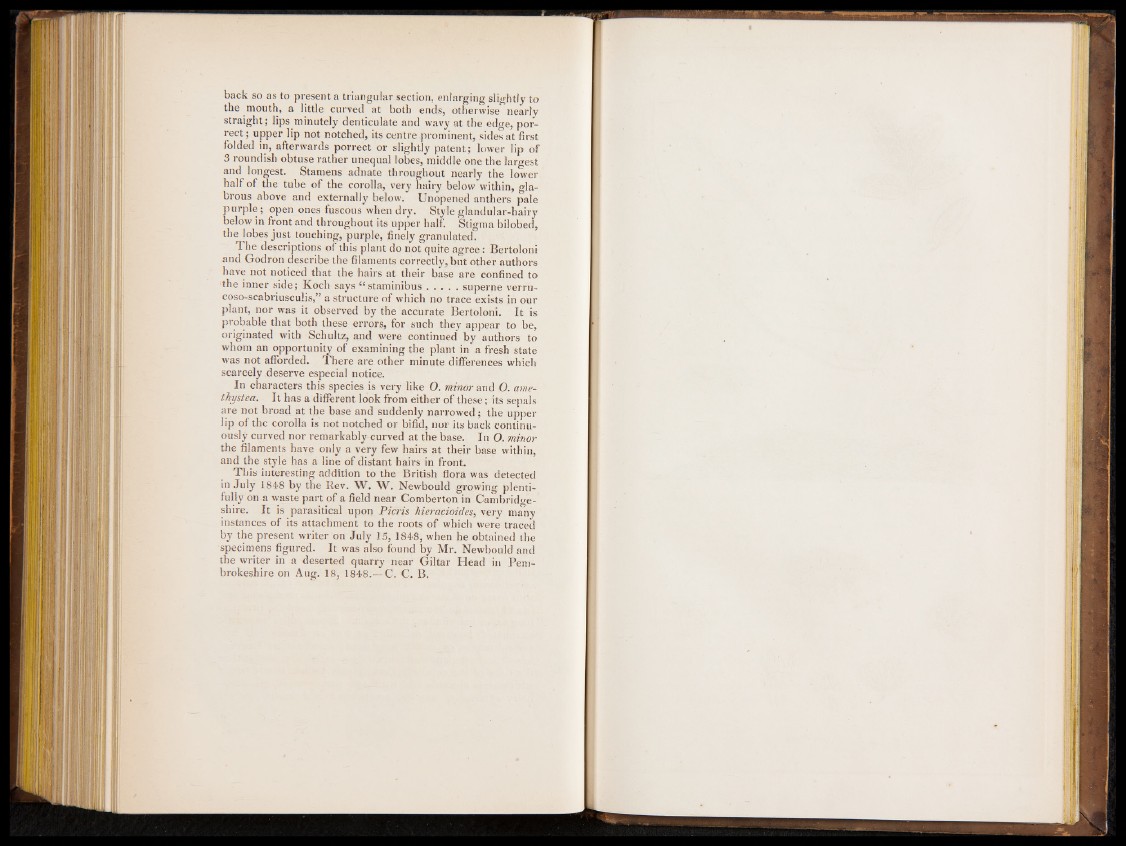
back so as to present a triangular section, enlarging slightly to
the mouth, a little curved at both ends, otherwise nearly
straight; lips minutely denticulate and wavy at the ed<re, por-
rect; upper lip not notched, its centre prominent, sides at first
folded in, afterwards porrect or slightly patent; lower lip of
3 roundish obtuse rather unequal lobes, middle one the largest
and longest. Stamens adnate throughout nearly the lower
half of the tube of the corolla, very hairy below within, glabrous
above and externally below. Unopened anthers pale
purple; open ones fuscous when dry. Style glandular-hairy
below in front and throughout its upper half. Stigma bilobed,
the lobes just touching, purple, finely granulated.
The descriptions of this plant do not quite agree: Bertoloni
and Godron describe the filaments correctly, but other authors
have not noticed that the hairs at their base are confined to
the inner side; Koch says “ staminibus..........superne verrucoso
scabriusculis,” a structure of which no trace exists in our
plant, nor was it observed by the accurate Bertoloni. It is
probable that both these errors, for such they appear to be,
originated with Schultz, and were continued* by authors to
whom an opportunity of examining the plant in a fresh state
was not afforded. There are scarcely deserve especial noticeo.ther minute differences which
In characters this species is very like O. minor and O. ame-
thystea. It has a different look from either of these; its sepals
are not broad at the base and suddenly narrowed; the upper
lip of the corolla is not notched or bifid, nor its back continuously
curved nor remarkably curved at the base. In O. minor
the filaments have only a very few hairs at their base within,
and the style has a line of distant hairs in front.
This interesting addition to the British flora was detected
in July 1848 by the Rev. W. W. Newbould growing plentifully
on a waste part of a field near Comberton in Cambridgeshire.
It is parasitical upon Picris hieracioides, very many
instances of its attachment to the roots of which were traced
by the present writer on July 15, 1848, when he obtained the
specimens figured. It was also found by Mr. Newbould and
the writer in a deserted quarry near Giltar Head in Pembrokeshire
on Aug. 18, 1848.—C. C. B.